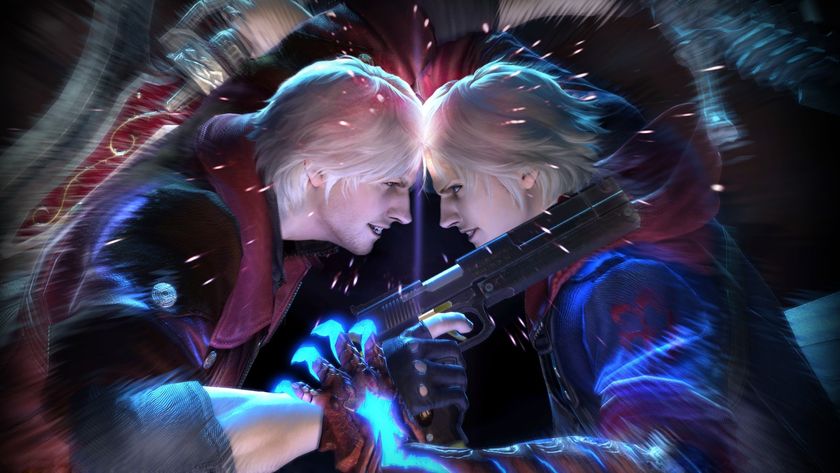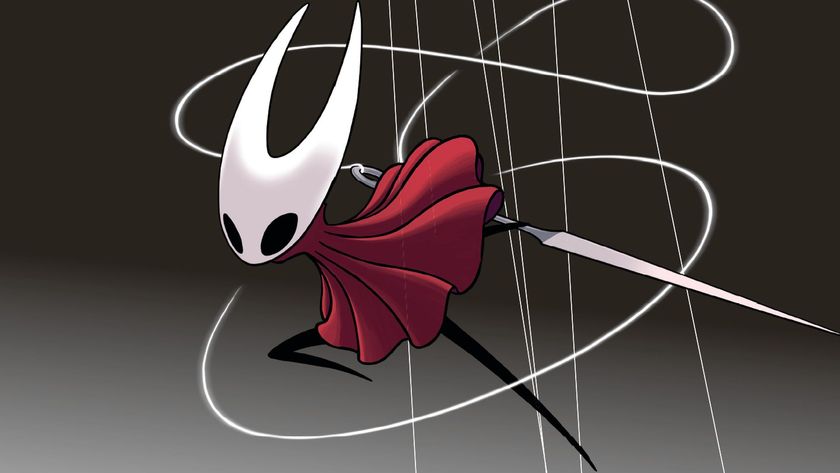GamesRadar+ Verdict
After all the information dished out in “Broken Pieces” we’re still none the wiser about what we’ll find on Soji's homeworld...
Why you can trust GamesRadar+
Warning: This Star Trek: Picard review contains major spoilers for episode 8. Turn your ship around now to avoid spoilers!
After devoting much of its first three episodes to explaining what’s been going on since The Next Generation era, Star Trek: Picard had got into the groove of telling a brilliant story of its own. In “Broken Pieces”, however, we’re back in information overload territory. It’s undeniably welcome that the show’s answering its biggest questions already – nobody wants another Lost – but when Raffi sits down with her crew to collate everything we’ve just learned, you start to wonder if all the info could have been a little more evenly spread across the season.
There’s no denying that the revelations here are Earth-shatteringly major. The biggest is the origin of the prophecy that’s been driving the Zhat Vash’s mission to purge the galaxy of synthetic life. In fact, it’s not so much prophecy as historical record, as it turns out the apocalyptic visions are hundreds of thousands of years old, a warning left behind by an ancient race about what happened when they created synthetics of their own. They left the “Admonition” on Aia, a “grief world” orbiting a complex system of eight stars in a configuration so improbable that its very existence was designed to serve as a warning – a truly ingenious premise.
Prophecies don’t generally fit in the science-based worlds of Star Trek – Deep Space Nine got away with it by using a race of wormhole aliens who have no concept of linear time – so this is a neat way of keeping everything consistent while still giving the Zhat Vash a motive for their zealot-ish behaviour.
But the most striking thing about the development is the huge thematic overlap with the rebooted Battlestar Galactica. Not only is Star Trek: Picard exploring similar ideas of synthetic humanoids rising up against their creators, it’s telling us that this isn’t the first time it’s come to pass. Nobody utters the BSG mantra that, “All this has happened before and all this will happen again”, but they might as well. (Intriguingly, the events of the divisive BSG finale mean the two show’s mythologies could conceivably tie together – even the timelines fit, more or less…)
The episode also brings definitive confirmation that Commodore Oh is a Romulan and that she’s such big news in the Zhat Vash that it was her who instigated the “Admonition”, imploring her all-female cabal of followers to experience the pain of the prophecy. It drives some of her group to suicide, others to madness – including Ramdha, one of the so-called Disordered we encountered in “The End is the Beginning”. Her fractured mental state apparently caused the submatrix collapse of the Borg Cube. Narissa, Narek’s Machiavellian big sister (and Ramhda’s niece), takes it all in her stride, and there’s confirmation that Oh – as we’d suspected all along – was the instigator of the synth attack on Mars.
Over on La Sirena, Picard himself is more bystander than a key player – as great as Patrick Stewart is, this is undeniably a good thing, as Star Trek works best as an ensemble. Jean-Luc’s key contributions are limited to arguing with Admiral Clancy about sending Starfleet ships to Soji’s homeworld (premature), reminiscing with Soji about Data (touching), and a speech about giving in to fear (pertinent – as ever, you can insert your own present-day political concerns as required). He also makes the hilarious admission that he can’t work modern holographic computers. Even in the distant future, pensioners will be asking for assistance with everyday tech…
There’s no such computer trouble for Soji, who’s learning to embrace her android self – there are deliberate echoes of Data as she takes control of La Sirena, piloting it through the Borg’s network of transwarp conduits on a mission to save her homeworld. She also has memorable moments with Dr Jurati, who’s now recovered from her self-inflicted poisoning but facing arrest for the murder of Bruce Maddox. It’s a moving moment when her curiosity and admiration for Soji gradually overcomes the effects of Oh’s mind-meld, though her redemption arc seems too easy.
But it’s Raffi – now apparently sober – who’s arguably the most important protagonist in the episode. She relishes the opportunity to a massive conspiracy and is subsequently the driving force in piecing together the multitude of mysteries at play.
One of the answers to her questions is far too close to home, however, and as a result feels contrived and unsatisfying. After all, what are the chances that the one living person Starfleet veteran to have encountered an android like Soji should be captain of the ship you’re travelling on? Surely the universe doesn’t need to be that small? Surely a bit more detective work should be required to get to the bottom of something quite so big?
It’s a shame so much of the episode hinges on such an implausible coincidence, because everything surrounding Rios’s sad past is beautifully played. The five emergency holograms are brilliantly used – the engineering version being Scottish is a lovely nod to Star Trek history – and allow Santiago Cabrera to show his range. Having the quintet lined up for interrogation by Raffi could have been a recipe for farce, but instead it’s entirely convincing, these five artificial sides of his personality aware that something is wrong, but blocked from recalling what it actually is.
As the real Rios relives his traumatic experiences as First Officer on the Ibn Majid with Raffi, it’s powerful stuff. It turns out the ship (unknowingly) picked up a pair of synthetics – one a male called Beautiful Flower, the other a female called Jana, who just happened to be the spitting image of Soji. Orders soon came through from Starfleet Command that the captain should execute the two prisoners, an act he carried out before taking his own life. Rios was so traumatised that he left Starfleet six months later – no wonder the ship’s logs were removed from Federation records...
Meanwhile, there’s an all-out war on the Borg Cube, as the Romulans clear out and Seven of Nine steps in to take back control. Narissa is on a killing spree, shooting Hugh’s beloved XBs while blasting dormant drones into space, prompting Seven to become Borg Queen for a day. It’s the only way to save this small offshoot of the Collective, but you’re never quite sure if she can (or, indeed, wants to) come back from it. Elnor’s typically innocent enquiry asking whether she plans to assimilate him is pivotal. “Anneke still has work to do,” she replies, revealing her humanity is still in there after all.
So now everybody’s set their coordinates for Soji’s homeworld – even Narek, whose ship gets the briefest of cameos in the final shot of the episode – for what we’re guessing is set to be the mother of all showdowns. After all the information dished out in “Broken Pieces” we’re still none the wiser about what we’ll find there – but we wouldn’t be surprised if it has something to do with Data’s evil twin brother Lore, an android so shifty he really does have the potential to be the Destroyer those old prophecies keep going on about.
New episodes of Star Trek: Picard appear in the US on Thursdays on CBS All Action, and in the UK on Fridays on Amazon Prime Video.
Richard is a freelancer journalist and editor, and was once a physicist. Rich is the former editor of SFX Magazine, but has since gone freelance, writing for websites and publications including GamesRadar+, SFX, Total Film, and more. He also co-hosts the podcast, Robby the Robot's Waiting, which is focused on sci-fi and fantasy.

Devil May Cry anime star recalls playing the game for the first time, as he explains what makes it so special: "There's definitely a unique thing to it"

Devil May Cry anime's Dante actor says the Netflix series and Capcom games aren’t "one to one," but fans should prepare for "so many Easter eggs"












